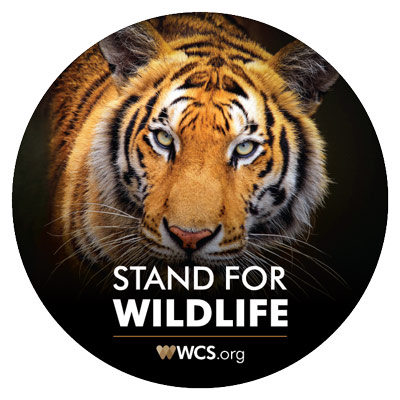Sudano-Sahel
Why WCS?
WCS has a significant presence in Sudano-Sahel region, with a strong conservation history and proven success in protected area management. We work actively to support local livelihoods, develop conservation-security partnerships, enhance anti-trafficking activities, and implement our strategy and scientific programs.
The Sudano-Sahel region includes some of the most progressive and effective country programs in WCS's Global Conservation portfolio, and WCS's legacy there dates back to the 1970s. The program includes several of WCS's key long-term, site-based programs in Africa (including Bamingui-Bangoran and Manovo St. Floris National Parks in the CAR and the Sena-Oura and Manda National Parks in Chad). WCS is also developing a number of pioneering conservation management models, including private-public partnerships for protected area management; community conservancies; conservation-security partnerships; landscape-scale, integrated law enforcement approaches; and engagement with extractive industries.
115,862 sq. km.
With partners, WCS currently supports the management of 4 national parks, 4 faunal reserves, 1 conservation corridor, 10 community hunting zones, and 19 hunting sectors across 2 countries. All told, these cover a total estimated 115862 sq. km., encompassing some of the largest and most intact wilderness areas left on earth, including wetlands, vast savannas, and woodland areas.
10 sites
WCS is actively building community-based conservation partnerships at 10 sites across the region.
On Our Strategies
Utilizing partnerships for protected area creation and management
This comes through private-public management partnerships, co-management, and/or technical support to protected area agencies and includes all aspects of protected area creation, planning, and adaptive management including law enforcement, infrastructure, research and monitoring, community cooperation, and innovative tourism development. It supports the establishment of a well-managed network of protected areas to form the cornerstone for long-term conservation, security, and development.
Creating full-chain wildlife law enforcement programs
This includes intelligence-led anti-poaching (including terrestrial and aerial surveillance), anti-trafficking (at landscape, national, transboundary levels), and legal follow up on prosecutions, to halt illegal wildlife poaching and trafficking and improve governance at local, national, and international scales.
CRAFTING AND EFFECTING SUSTAINABLE LANDSCAPE-SCALE PLANNING AND MANAGEMENT
This includes community-based resource management (such as fisheries, wildlife management, non-timber forest products) and alternative sustainable livelihoods partnerships; extractive industry best practice partnerships and certifications (timber, mining, oil); and partnerships with tourism operators. It also encompasses land-use planning with ecologically sound zoning, conflict mitigation strategies, set-asides, corridor establishment outside of protected areas, and road planning. Plus, climate change adaptation and mitigation programs and integrating human-wildlife health interface concerns in management interventions contribute to the sustainability of these efforts.
DEVELOPING CONSERVATION-SECURITY PARTNERSHIPS WHICH EXPLICITLY CONTRIBUTE TO THE SECURITY OF BOTH PEOPLE AND WILDLIFE
This includes the stabilization of remote insecure zones, creating security cooperation and information sharing agreements, partnerships between protected areas, local authorities, communities, and armed forces, and surveillance which detects and addresses threats to both human and wildlife security and mitigates conflicts. It means fostering good governance and stability and reducing conflict in remote areas which are susceptible to corruption, insecurity, and local and global threats (including banditry, terrorism, and insurgency development).
IMPROVING THE WELL-BEING OF THE PEOPLE LIVING AND MOVING IN AND AROUND THE SITES IN WHICH WE WORK
People depend on the savannas and forests of the Sudano-Sahel region for their water, culture, food, shelter, and livelihoods. We're looking to support them in four main ways:
- Working at new scales and with new partners to improve food security with conservation-friendly methods.
- Supporting community-based management of wild places and the establishment and management of conservancies.
- Aiding local communities in enhancing sustainable natural resource use practices (fisheries, Shea, Gum, etc.) and connecting them with viable markets.
- Creating land-use agreements to mitigate resource conflicts and improve cohabitation for agriculturalists and transhumance pastoralists.
Sign Up for Email Updates
Get news from the field and learn about ways you can help Earth’s most threatened species.








